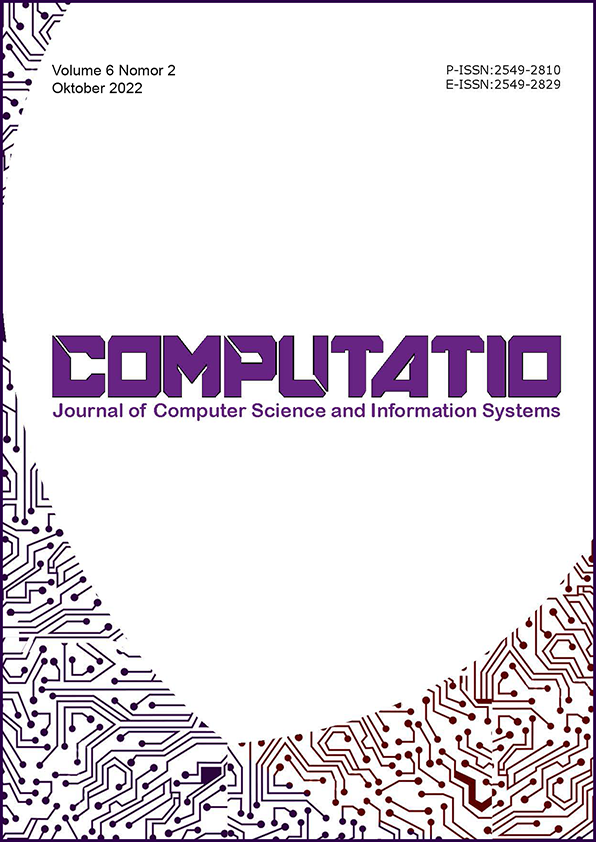DEVELOPMENT OF WEB-BASED SERVICEAPP APPLICATIONS AND USABILITY TESTING USING THE USABILITY SCALE SYSTEM (SUS) CASE STUDY: PT TELEMEDIA MITRA ERAJAYA
Main Article Content
Abstract
Today, many companies have taken advantage of the use of technology to help their business processes. One of Indonesia's companies engaged in Test and Measurement, Network Monitoring and Telecom Professional Services is PT Telemedia Mitra Erajaya which uses applications to help its business processes, especially in inventory. This study aims to evaluate and produce a recommended application design based on the evaluation results using the System Usability Scale (SUS) method to measure application usability. In usability testing, there are five components: Learnability, Efficiency, Memorability, Errors, and Satisfaction. After the Usability evaluation is complete, the results will be used as recommendations for the design of the Serviceapp application. The results of usability testing on existing enterprise applications get the results of 54.75 points. The framework for designing the Serviceapp application is Laravel with the adminLTE template. This research results from a website-based Serviceapp Inventory application that can help companies enter data and are easy to access. The usability testing results obtained are 74.75 points. With the new application, test results increased by 20 points.
Article Details
Section

This work is licensed under a Creative Commons Attribution-NonCommercial-ShareAlike 4.0 International License.
This work is licensed under Creative Commons Attribution-ShareAlike 4.0 International License.
References
R. Purba, Aplikasi Teknologi Informasi: Teori dan Implementasi - Google Books, vol. 2, no. 1. 2020.
M. Ikhsan, R. S. Anggraeni, D. A. Rarasati, A. N. Rahman, A. P. Widodo, and E. Sediyono, “Advantages of Enterprise Management System by Combining ERP (Enterprise Resource Planning),” vol. 9, no. 1, pp. 73–85, 2021.
U. B. Darma, “Evaluasi Usability Website Menggunakan,” pp. 588–595.
D. W. Ramadhan, “PENGUJIAN USABILITY WEBSITE TIME EXCELINDO MENGGUNAKAN SYSTEM USABILITY SCALE (SUS) (sTUDI KASUS: WEBSITE TIME EXCELINDO),” JIPI (Jurnal Ilm. Penelit. dan Pembelajaran Inform., vol. 4, no. 2, p. 139, 2019, doi: 10.29100/jipi.v4i2.977.
BPS, “Information and Communication Technology Development Index (IP-ICT) 2020 (Indeks Pembangunan Teknologi Informasi dan Komunikasi (IP-TIK) 2020),” vol. 12, no. 95, pp. 1–8, 2020, [Online]. Available: https://www.bps.go.id/pressrelease/2020/12/15/1750/indeks-pembangunan-teknologi-informasi-dan-komunikasi--ip-tik--indonesia-tahun-2019-sebesar-5-32-pada-skala-0---10.html#:~:text=Indeks Pembangunan Teknologi Informasi dan Komunikasi (IP-TIK) merupakan,dig.
M. Lesnanda, Y. Aryo, and B. Raharjo, “Perancangan Website Penjualan Pada Online Shop Luxmoire Dengan Framework Laravel Dan Bootstrap,” vol. 2, pp. 209–221, 1978.
A. W. Soejono, A. Setyanto, A. F. Sofyan, and W. Anova, “Evaluasi Usability Website UNRIYO Menggunakan S ystem Usability Scale ( Studi Kasus : Website UNRIYO ),” vol. XIII, pp. 29–37, 2018.
A. Kaya, R. Ozturk, and C. A. Gumussoy. "Usability Measurement of Mobile Applications with System Usability Scale (SUS)". Global Joint Conference on Industrial Engineering and Its Application Areas, GJCIE 2018, June 21–22, Nevsehir, Turkey, 2018.
M. Rumbiak and J. Setiawan, “Evaluasi Usability Website library.umn.ac.id Universitas Multimedia Nusantara”, Ultima InfoSys : Jurnal Ilmu Sistem Informasi, vol. 8, no. 2, pp. 87-94, Dec. 2017.
A. Saputra, “Penerapan Usability pada Aplikasi PENTAS Dengan Menggunakan Metode System Usability Scale (SUS)”, jtim, vol. 1, no. 3, pp. 206-212, Nov. 2019.
Z. Elma. "Implementation of Usability Testing Methods with Usability Scale System in Evaluation of Websites for Subtitle Service Providers", Ultima InfoSys: Jurnal Ilmu Sistem Informasi, Vol. 10, no. 2, pp. 104-110, Jan. 2020.
J. Wiratama and R. Desanti, “Analysis and Design of Web-Based Information System for Church Congregations Case Study: Church BNKP Pewarta”, Ultima InfoSys : Jurnal Ilmu Sistem Informasi, vol. 12, no. 2, pp. 115-120, Apr. 2022.

